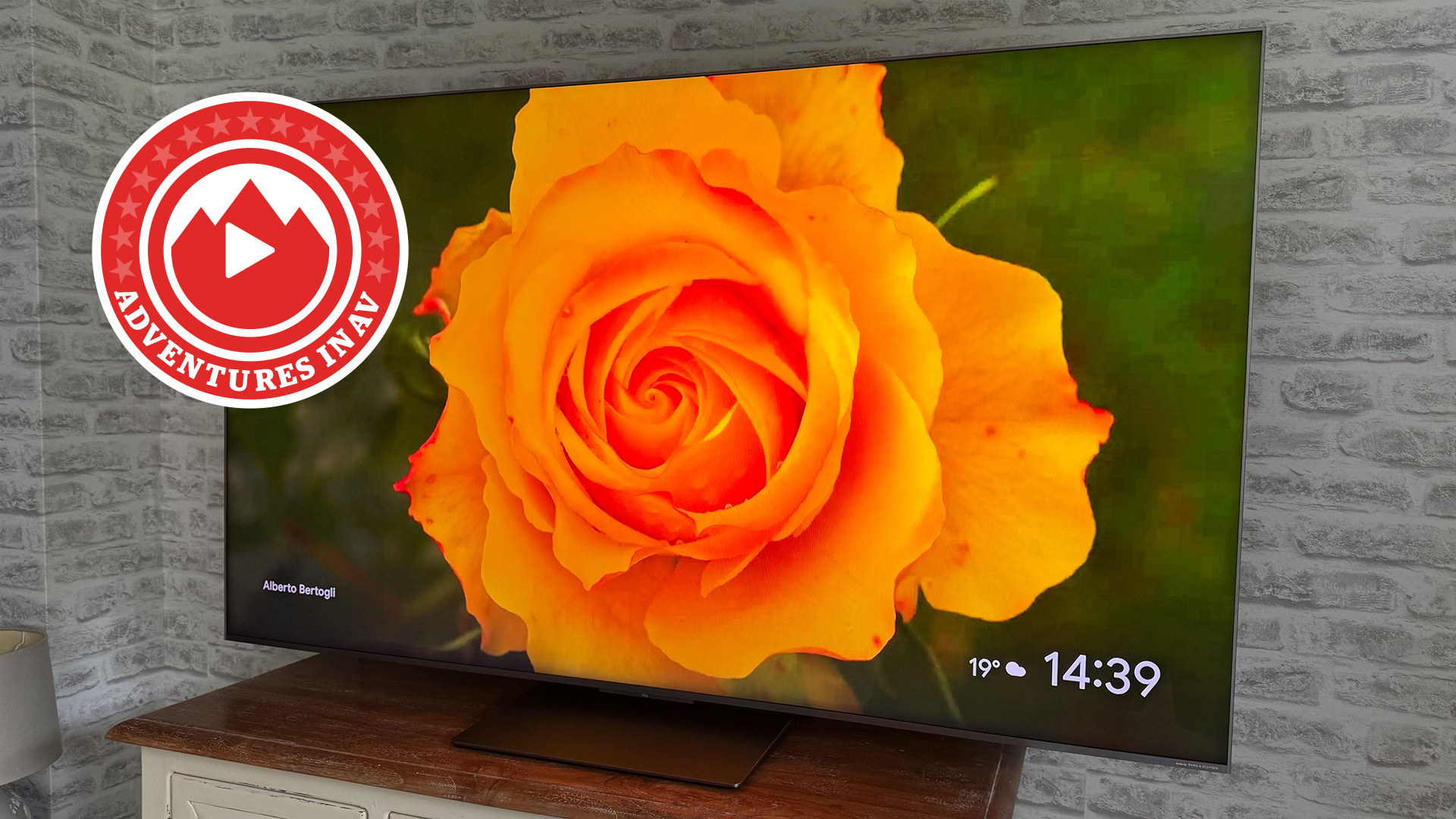Sony Bravia 8 II vs A95L: which five-star OLED TV should you buy?
Sony has replaced the A95L
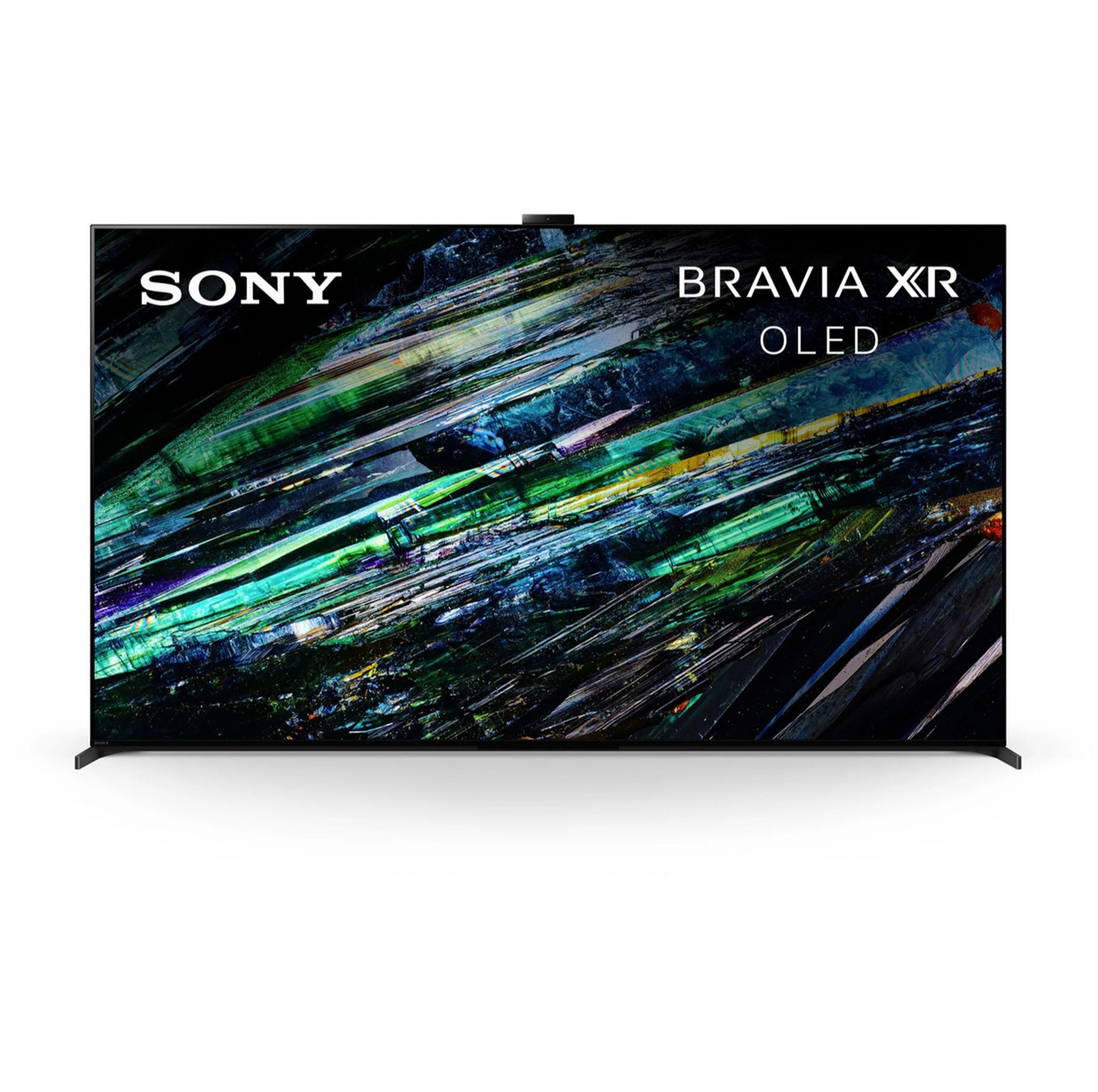
Screen sizes: 55-inch, 65-inch, 77-inch
Type: QD-OLED
HDMI inputs: x 4 (2 x 48Gbps HDMI 2.1)
Gaming features: 4K/120Hz, VRR, ALLM, Dolby Vision game mode
Dimensions (hwd, without stand): 83 x 144 x 3.4cm (65-inch model)
Two years old and still going strong. The A95L can still mix it with the best around, thanks to its bright and sharp picture and superb sound. And with the Bravia 8 II now succeeding it, its price could drop further. But its picture is outdone by its successor.
Pros
- Stunning brightness, contrast and colours
- But even-handed and authentic, too
- Crisp, direct and spacious sound
Cons
- Still only two HDMI 2.1 sockets
- Feet can only be positioned at the extremes of the TV
- Beaten for brightness, shadow detail and solidity by
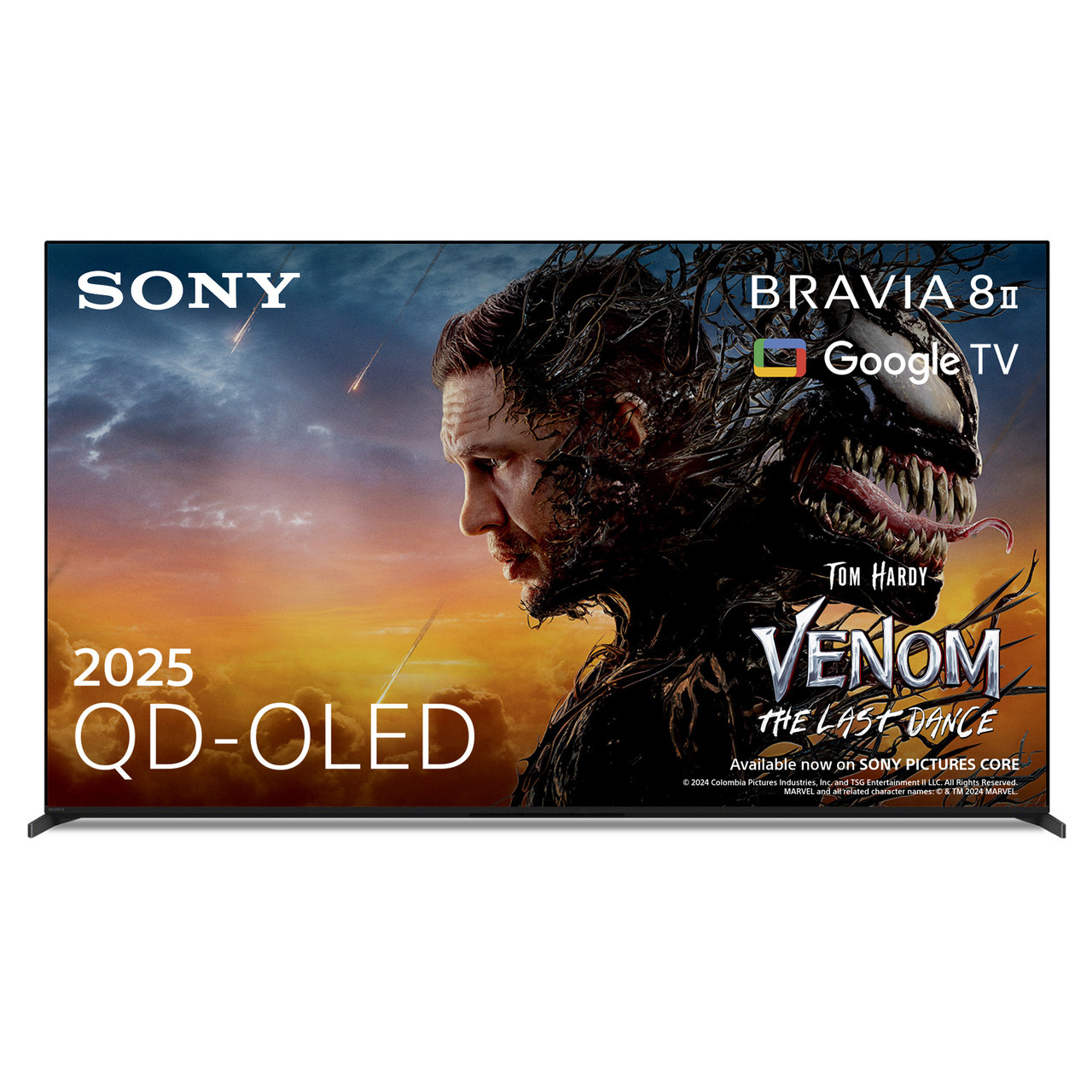
Screen sizes: 55-inch, 65-inch
Type: QD-OLED
HDMI inputs: x 4 (2 x 48Gbps HDMI 2.1)
Gaming features: 4K/120Hz, VRR, ALLM, Dolby Vision game mode
Dimensions (hwd, without stand): 83 x 144 x 3.4cm (65-inch model)
Brighter and sharper, the Bravia 8 II is a real improvement on the excellent A95L. Its picture is notably better, thanks to brighter highlights and more shadow detail, and the sound is just as good. It's worth the extra spend, if you can stretch to it.
Pros
- Exceptionally bright, vibrant and three-dimensional picture
- Perfect blacks and excellent shadow detail
- Stunning and cinematically authentic right out of the box
Cons
- Not as outright bright as the LG G5
- Still just two HDMI 2.1 sockets
- Positioning of the feet will be awkward for some
You would expect the Bravia 8 II to be the follow-up to the Bravia 8, right? But no; it actually succeeds the A95L, one of the finest TVs of recent years.
Like its predecessor, the Bravia 8 II is a QD-OLED model (whereas the Bravia 8 is a W-OLED), but with several small yet notable improvements that make it an even better proposition.
But with the A95L currently discounted, could it prove the wiser buy? Let's find out more about these improvements…
Sony Bravia 8 II vs A95L: price
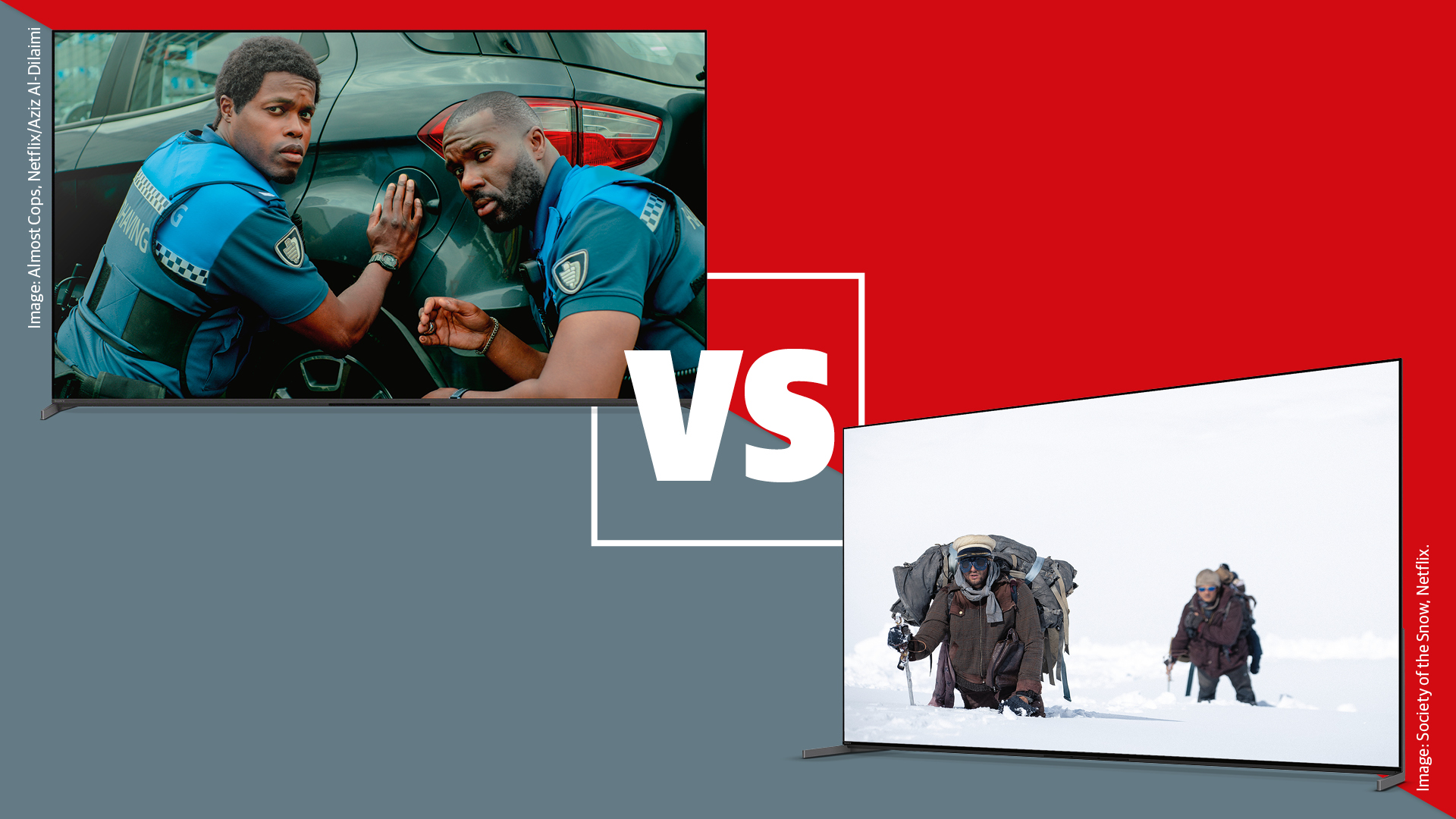
The Bravia 8 II has a lower launch price than the A95L. But given that the A95L has been out since 2023, its price has inevitably come down a fair bit. So it is still the cheaper of the two.
This table shows their launch prices only.
Size | Sony Bravia 8 II | Sony A95L |
|---|---|---|
55 | £2499 / $3500 / AU$3299 | £2999 / $2800 / AU$5295 |
65 | £2999 / $4000 / AU$3999 | £3699 / $3500 / AU$5995 |
77 | No such model | £5999 / $5000 / AU$9495 |
Whereas the below widget shows each TV's current retail price. At the time of writing, the A95L goes for around £1800 at 55 inches and £2750 at 65 inches – that's £700 cheaper than the Bravia 8 II at the smaller size, though only £150 cheaper at the bigger size.
The A95L price has fallen lower before, though – we have seen it at £2199 at 65 inches. Which makes your decision considerably tougher…
** Winner: Sony A95L **
Sony Bravia 8 II vs A95L: design
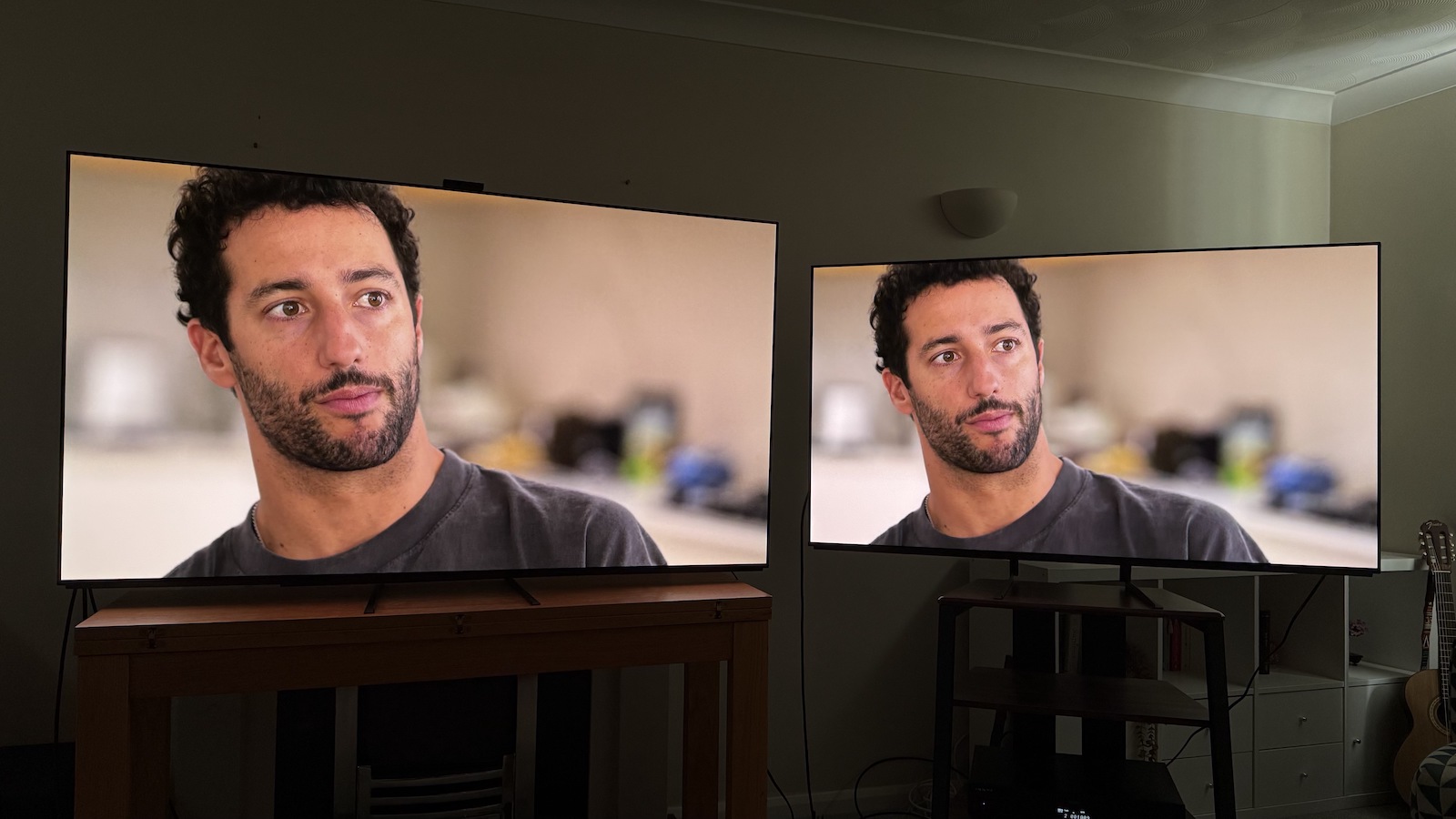
There's not a lot of difference in the two models' designs – Sony has effectively reused the A95L's chassis for the Bravia 8 II.
It has the same 3.4cm thickness as the A95L, which is actually quite chunky for a modern OLED TV. But then it does contain an actuator-based sound system (more on this later) and a custom heatsink.
The blade-style feet are back as well. They look undeniably cool, but they can only be positioned at the outer edges of the TV. Which means you'll need a pretty wide TV cabinet to accommodate it – at least 122cm (48 inches) for the 55-inch model and 145cm (64.5 inches) for the 65-inch version.
You can simply add a third-party universal TV stand with a narrower footprint, though this won't look as stylish as Sony's own solution.
The feet might not move inwards, but they can be made taller to accommodate a soundbar without it obstructing the screen.
There is one quirk of the design: the remote control. The Bravia 8 II's remote is a downgrade on the A95L's – it's powered by AAA batteries and isn't backlit, whereas the A95L's is rechargeable and lights up in the dark.
It might be splitting hairs, but with the rest of the design identical, this tips the round in the A95L's favour.
** Winner: Sony A95L **
Sony Bravia 8 II vs A95L: features
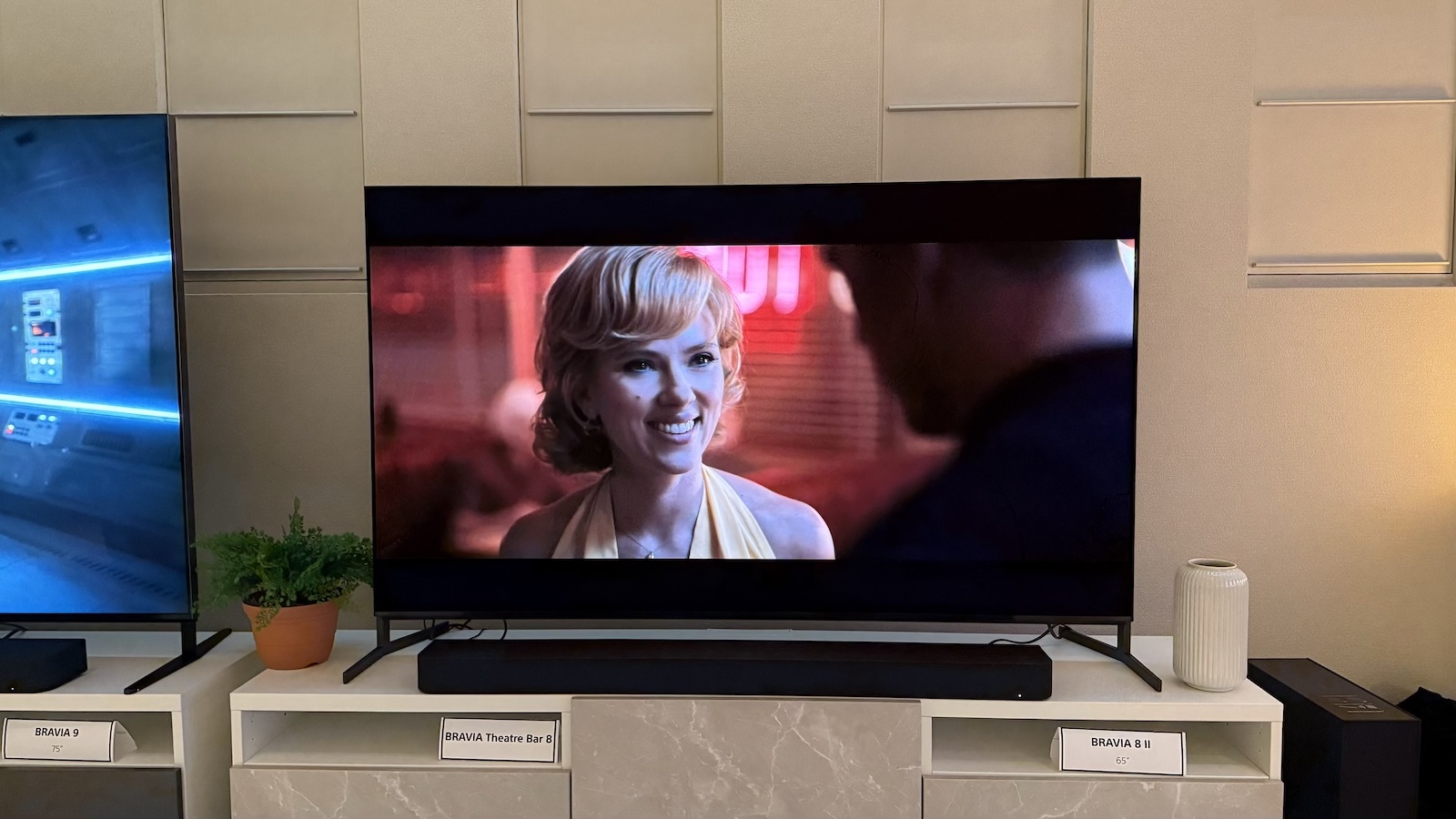
The A95L came out in 2023, so you would expect a few new features from the Bravia 8 II. And that's exactly what you get.
There's a new screen, for starters. Its 'latest QD-OLED' panel, combined with the heatsink and Sony's processing skills, makes it 25 per cent brighter than the A95L in terms of peak brightness, and 50 per cent brighter than the Bravia 8 W-OLED.
This brings with it an increase in colour volume, while Sony also claims big gains in terms of dark shading.
Sony's XR processor is on board, and this time it uses AI to detect and analyse scene information and optimise the picture accordingly.
The A95L uses Sony's Cognitive Processor XR, which is an earlier variant. It lacks the AI scene-recognition system of the Bravia 8 II, but does have XR Clear Image, which cleans up source material so it looks better on screen.
Otherwise, the feature sets are very similar. The Bravia 8 II has Studio Calibrated modes for Netflix, Sony Pictures Core and Prime Video, but the A95L is lacking the last of these. Both TVs have Dolby Atmos and Vision (alongside the HDR10 and HLG formats of HDR), as well as IMAX Enhanced certification.
They have the same gaming specifications, too, though these are bettered by TVs from other manufacturers. They both support 4K/120Hz, VRR and ALLM, have Dolby Vision gaming and the ‘Perfect for PlayStation 5’ functionality. But they each have only two HDMI 2.1 sockets, whereas four is standard with OLEDs from Samsung and LG.
Google TV comes on both TVs. While the A95L lacked UK terrestrial catch-up apps at launch, they arrived via a subsequent firmware update.
** Winner: Sony Bravia 8 II **
- HDR TV: what is HDR? How do you get it?
Sony Bravia 8 II vs A95L: picture
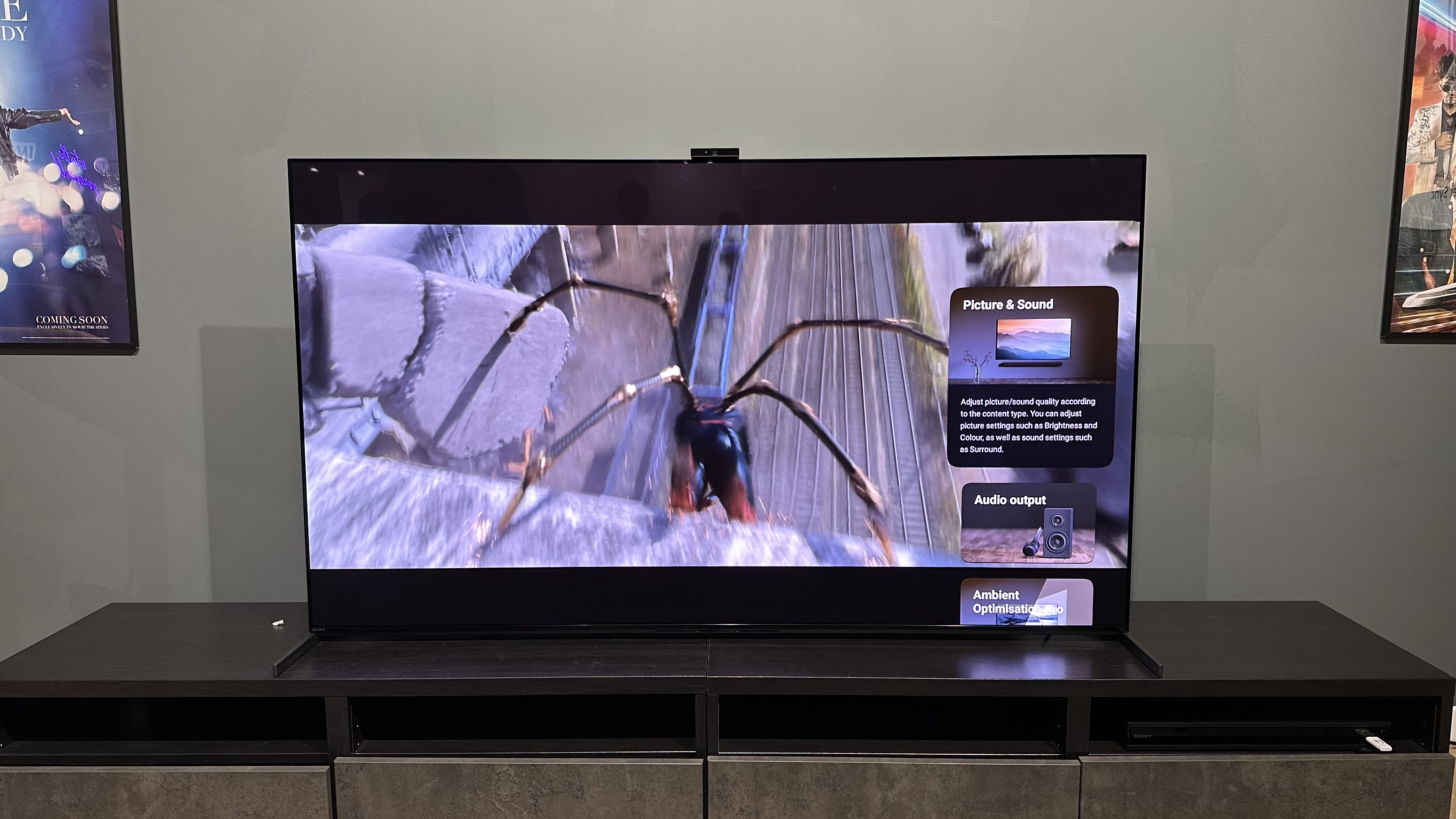
Our first impressions of the Bravia 8 II were very good indeed, and now that we have given it the full review treatment, we are happy to confirm that these were on the money. Its picture quality is fantastic.
It's a significant upgrade on the A95L, which, if you're aware of that set's quality, you'll know is really saying something.
Unlike some of the fussier TVs around, it's a doddle to get it looking its best – just pick Dolby Vision Dark for Dolby Vision content or Professional for everything else, and you are guaranteed a fantastically authentic picture.
Peak highlights are brighter, while colours keep their natural vibrancy in low-light areas. The extra shadow detail (what Sony refers to as "dark gradation") is plain to see.
"But what’s most impressive is how all of these elements combine with Sony’s new AI processing to make the image look so much more solid and three-dimensional," we say in our review.
"There’s volume and roundedness to objects and people… and backgrounds have depth and purpose."
But the A95L still holds its own against more modern TVs. That's because it was a little ahead of its time – its rivals have been playing catch-up ever since.
The A95L picks out plenty of detail within highlights, giving surfaces lots of shading and texture that rival TVs miss. But the black elements are just as impressive, with lots of depth and a similar abundance of detail.
"What's more," we add in our review, "the A95L also reproduces colours expertly in these darkest parts of the picture so that skin tones remain accurate and lifelike where other TVs allow them to go a bit pale.".
It all makes for a more solid and three-dimensional image.
** Winner: Sony Bravia 8 II **
Sony Bravia 8 II vs A95L: sound

The Bravia 8 II has the same actuator-based sound system as the A95L. Two actuators vibrate the screen in order to create sound that comes from the corresponding part of the picture. It's a remarkably effective way of tying the audio to the visual.
But its audio expands far beyond the confines of the screen, adding a nice degree of spaciousness to proceedings.
"There’s excellent detail, too, and enough dynamic nuance to convey the emotion in an actor’s performance," we say in our review. "Bigger dynamic shifts are also handled well, with chapter two of Blade Runner 2049 building steadily where rival sets sound flat."
We describe the A95L as sounding direct, detailed and dynamic. Its pseudo Atmos effect is quite impressive, though the lack of up-firing drivers preclude it from having true height channels.
Despite the two built-in subwoofers, both the A95L and Bravia 8 II are a bit bass light.
Like all TVs, they would benefit hugely from one of the best soundbars or best surround sound systems – but unlike most TVs, a budget soundbar won't provide a notable improvement. You'll need to spend a bit more for any appreciable difference.
** Winner: Draw **
Sony Bravia 8 II vs A95L: verdict
The Bravia 8 II is clearly the better TV. It is brighter, has more shadow detail and is an absolute cinch to get looking its best. Its processing is more advanced too, and the sound quality is just as brilliant as the A95L.
But, despite the Bravia 8 II's lower launch price, the A95L is still the cheaper set. And it's still a fantastic performer. Its price is only going to drop further now that it's being replaced. So you really have to weigh up how much these improvements are worth to you.
MORE:
Read our Sony Bravia 8 II review
And our Sony A95L review
Sony 2025 TV lineup: everything you need to know
The best Sony TVs you can buy
The latest hi-fi, home cinema and tech news, reviews, buying advice and deals, direct to your inbox.
Joe has been writing about tech for 20 years, first on staff at T3 magazine, then in a freelance capacity for Stuff, The Sunday Times Travel Magazine (now defunct), Men's Health, GQ, The Mirror, Trusted Reviews, TechRadar and many more. His specialities include all things mobile, headphones and speakers that he can't justifying spending money on.
You must confirm your public display name before commenting
Please logout and then login again, you will then be prompted to enter your display name.

